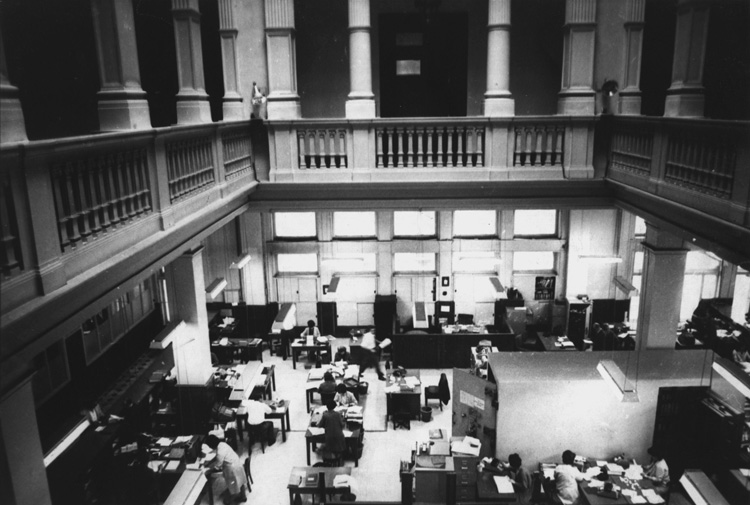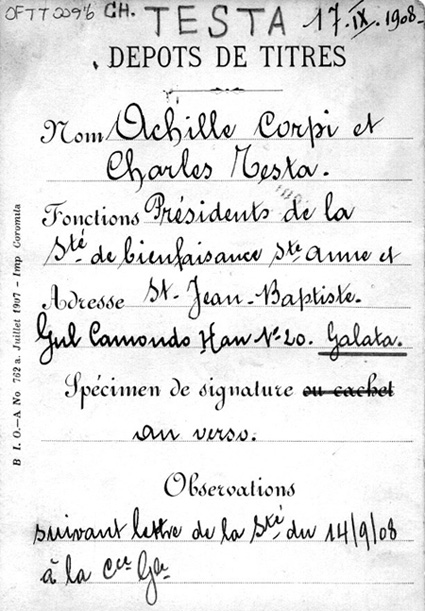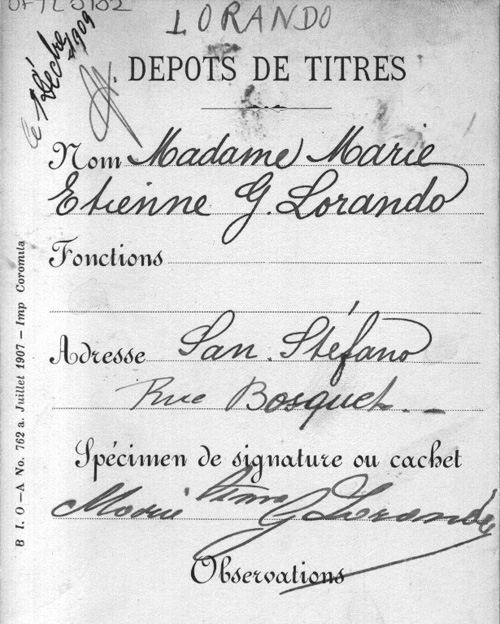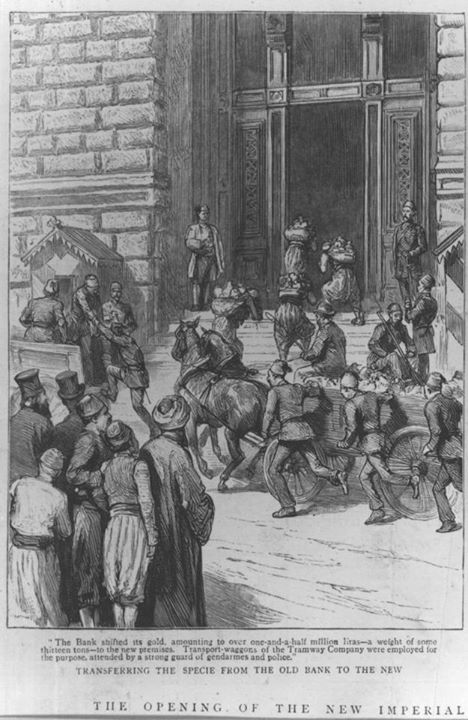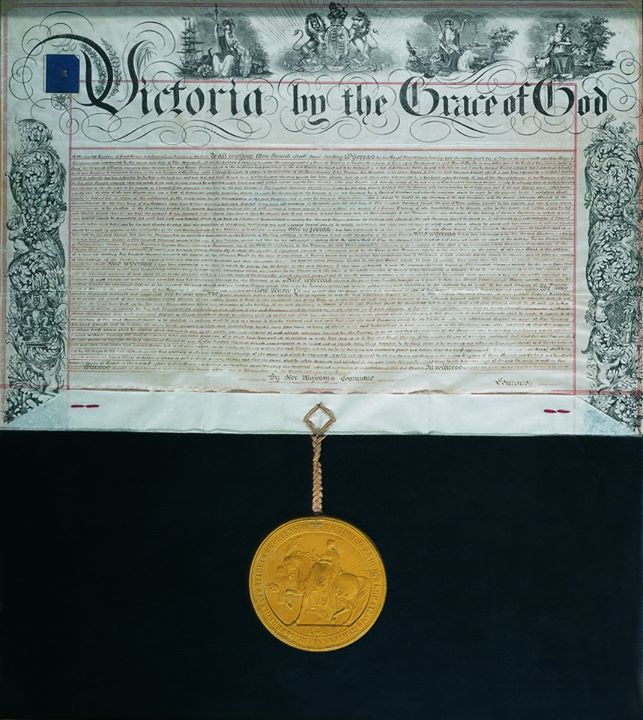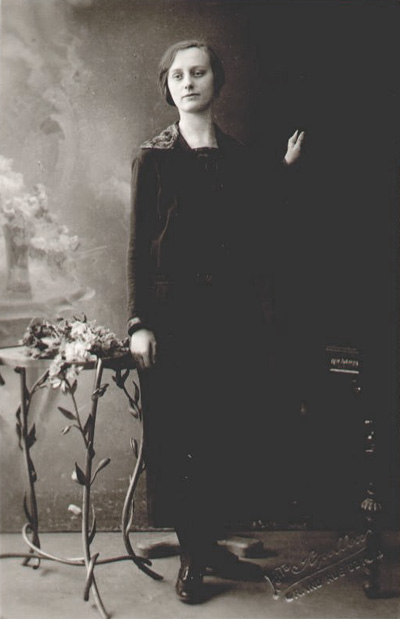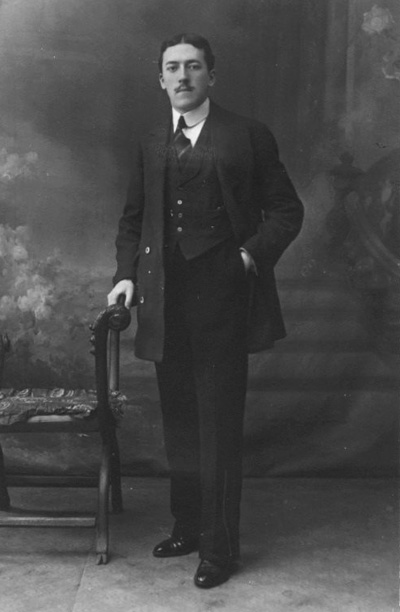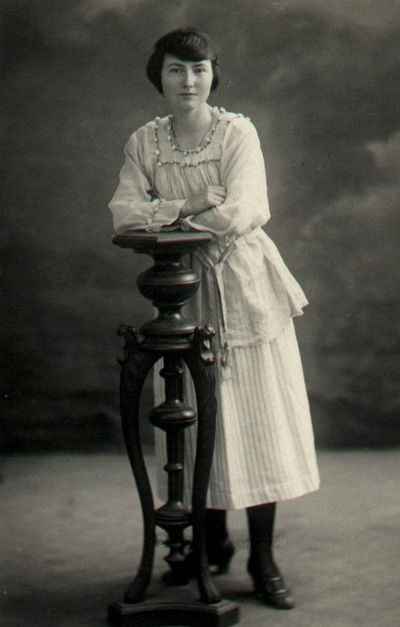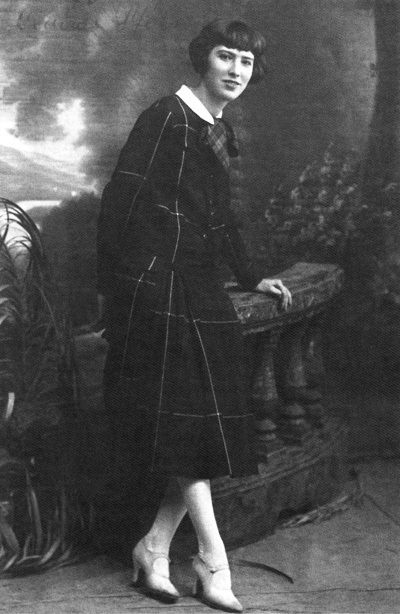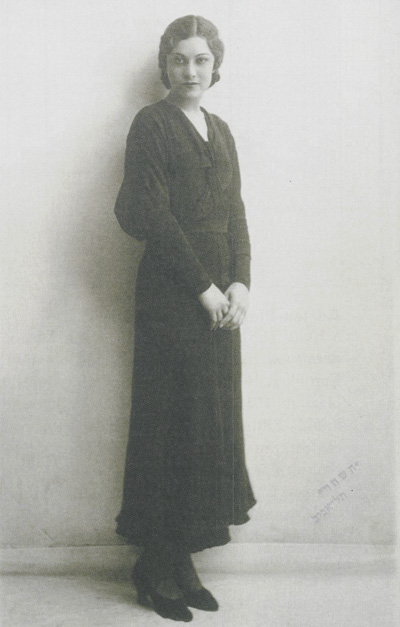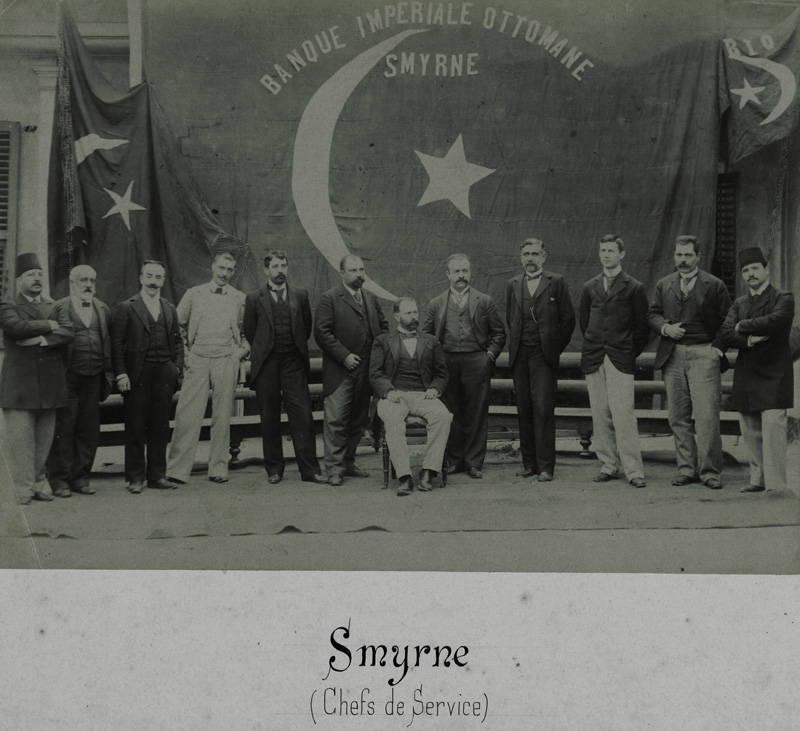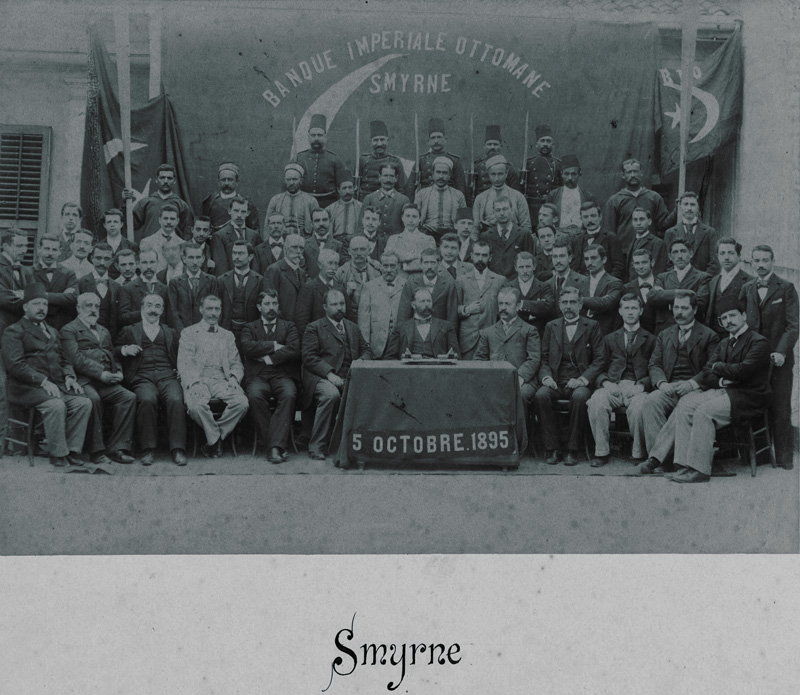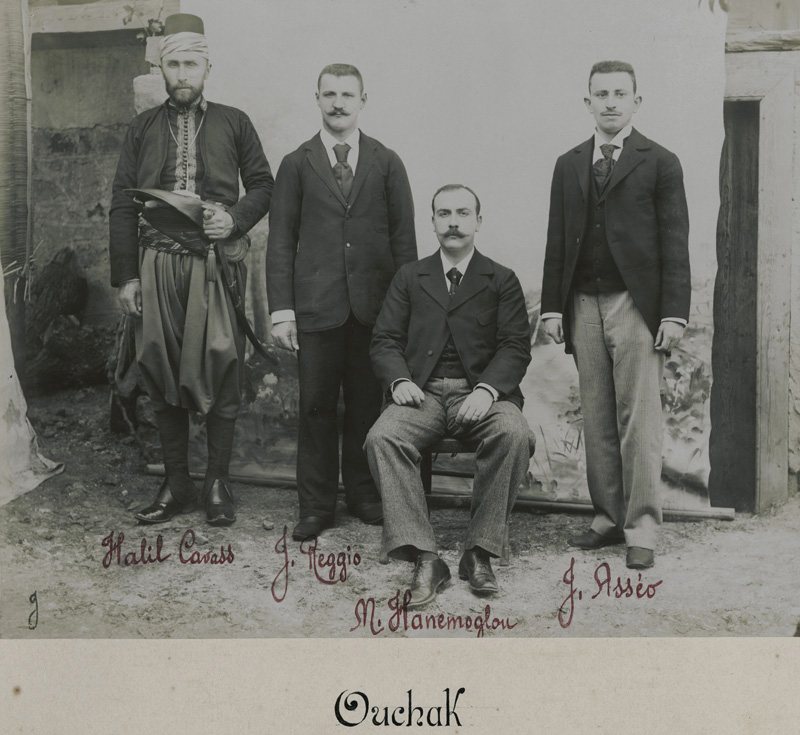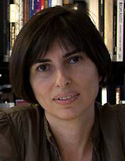Sources for Levantine HistoryLorans Tanatar Baruh, 2015In the 19th and 20th centuries, the archival records gathered mainly at the state archives came to be valued as reliable repositories of truth and seedbeds of veracious history. Indeed the state archives are sustained to serve the state, however its interests may be defined and often become a function of a particular kind of state politics.1 Both the composition of documents as well as ways they are appraised and acquired at a certain point in time reinforce the role of state archives as collaborators in an ‘official’ process of history making and memory formation. Historical paradigms have changed by the end of the 20th century; the ‘great history’ which was closely connected to national history lost its ground and gave place to social and cultural history, which gave emphasis to diversities, ‘multi vocalities’, ‘multi perspectives’. The multi-disciplinary approach and the transnational studies, which give emphasis to the interconnectivity between people instead of boundaries of nation states, reinforced the research in this new vision. Thus the ‘individual’ and ‘local communities’ became to be at the centre of new studies. New research contested the national narrative, individual memory challenges the collective one, local memories contested the ‘great history’ and the ‘history’ is transformed into ‘histories’. As researchers have shifted their interests from institutions to a broader exploration of social and cultural systems, in which individuals and local communities must find a place, the relevance of the archives has also changed. Simply, stated, it is no longer acceptable to limit the definition of the society’s memory to solely to the documentary residue left over (or chosen) by powerful record creators. An ‘archival turn’ took place in the second half of the 20th century whose important contribution was the rethinking and substantial broadening of our understanding of what constitutes ‘historical material’. This material is nothing more than the remaining of several conscious or casual selections through time and just like human memory, is fated to be fragmentary, partisan and sometimes transient. This perspective opens the way to the work of the archives dealing with personal papers, diaries, scrapbooks, vernacular photographs. Obviously, such sources could not be part of a monolithic national identity. Rather they show us that our lives are plural in the sense that every collection bears the imprint of many lives on the objects, visual material and textual documents that was brought together. SALT ResearchFounded in 1997, the Ottoman Bank Archives and Research Centre, which was restructured on the foundations of the two other cultural institutions of the Garanti Bank, Platform Garanti Contemporary Art Center and Garanti Galeri to become SALT in 2011, set itself as an alternative to state archives. Arguing that the traces of the past are not limited to official spaces or state repositories, the centre opened the Ottoman Bank Archives to researchers. Those documents do not only give us the financial history of the Ottoman Empire/Turkey from the perspective of the bank but also are very precious for their contribution to the social, economic and cultural history of the country. The bank, which disposed of the most widespread branch and service network of the period, and therefore, the broadest mass of clients, had depositors who in a sense mirrored Ottoman society. Although it may be observed that these people could be associated to a certain socio-economic criteria, a wide range of people from the Sultan to a merchant, from the Grand Vizier to a grocer, from a writer to a housewife or a singer benefitted from the services offered by the Ottoman Bank. The card cabinet, which is currently preserved in the archives and contains more than 6,000 customer cards is the most striking witness to this. The nearly 10,000 files created by the legal affairs department of the bank, allow for more in depth information about many clients. However, it is the records concerning the Bank’s personnel, which are perhaps the most perfect illustration of the contribution the Bank’s archive can make to the social history. These files concerning some 6,000 people employed by the Bank until 1933 contain more detailed information than the customer files. They contain not only basic information on each and every employee -such as name, civil status or origin- but also more unusual information as the level of education, linguistic competencies, professional experience and even a full-length photograph for each one. In other words, the Bank’s archive provides information on thousands of people with a precision unequalled by any other contemporary source. Since its very beginning, the vision of the Centre was extended to the economic, social, urban and cultural history of the 19th and 20th centuries. Photos, postcards, maps, newspapers and magazines, trade directories of the period, that is the printed material, which conventionally aren’t considered as archives, were added to the digital collection most often with the collaboration of third parties. The French Language Press in the Ottoman Empire is the most extensive digital collection coming out from such a cooperation. This project, a collaboration between İstanbul Atatürk Library, Bibliothèque Nationale de France and Institut Français d’Études Anatoliennes, aims to digitize newspapers and magazines published in French from the second half of the 19th century to the 1930s. The date was extended until 1930’s since the 1920’s were still the years of the adaptation to the new regime before its consolidation in the later decade. More than 70 titles, including periodicals printed in the Ottoman Empire as well as media published by the Young Turks of Europe, are now accessible. İstanbul Atatürk Library’s collection of Franco-Ottoman press has been digitalised by SALT Research, while the collection of Bibliothèque Nationale de France can be accessed through Gallica. The archival series also continue to grow since 1997 with all sorts of textual and visual documents like diaries, letters, private papers memoirs, images, architectural drawings, urban plans, which contribute to the alternative histories of the Empire or the Republic, not yet written as they were not considered legitimate subjects of history. These professional and private documents kept into families, in the hands of individuals who get them by different means, bought from the auctions, delivered to them for some reasons but also sometimes gathered from the garbage or second hand dealers acquiring, when “clearing the attic/apartment” of someone who had died without any inheritor or “buying the junk or various objects” from people who were not interested in them anymore. In this sense every archive has its own story of acquisition, which most often was neglected but invaluable for the archivist building the architecture of the archive, and also for those willing to historicize the production of archival collection. The Italian Embassy Archive was acquired through a second hand dealer who got them after the cleaning of a building within the consulate. Containing extensive documentation from 1847-1925, the Italian Embassy Archives describe the Italian community in Istanbul during this period. Included are the records of the Italian Embassy in Istanbul, as well as archival materials from Italian institutions such as hospitals, schools and prominent Italian associations, and commercial correspondence among foreign companies both within the Ottoman Empire and abroad. These registers, which constitute a part of the Italian Embassy archive, are important for the local history of the Italians living in Istanbul and its surroundings, a topic which is not necessarily one of the priorities of the Foreign Ministry of Italy. The Saint Pierre Church Archive belonging to Saint Pierre & Saint Paul Church in Galata, covers a period dating back to the 18th century. It documents the Latin population in Galata and the transformation of this area over a period of two centuries. Comprising official documents from civil authorities and various other documents pertaining to the Dominican presence in İstanbul, the archive, in a sense, complements the Italian Embassy Archives. The first catalogue, prepared by Fr. Benedetto Palazzo in 1939 and published in Italian in 2002, was revised, translated and digitized by SALT Research. The original documents of the archive have been preserved by Saint Pierre Saint Paul Church, with a digital version available at SALT Research with written permission from the church. The documents of the Genoa based World Council of Churches in Turkey kept at the American Board building in Rıza Paşa street in Eminönü was transferred to SALT Research in 2010. The archive fund Conseil Oeucuménique des églises – World Council of Churches (EU) contains 472 dossiers on refugees, personnel and the correspondence of the institution. A small number of older dossiers pertain to the aids of the United Evangelical Churches in Bulgaria and the United Church Board for World Ministries in the United States. The Households and Family Papers contain private and professional papers of various families, mostly from Aegean coast or Istanbul at the turn of the 20th century. Diaries, photos, letters, official documents of families or individuals intermingled sometimes with the professional documents tells us private stories, sensibilities, perception or interests of mostly unknown but sometimes prominent individuals/families like figures from the Muslim bourgeoisie Said Bey or Şerbetçizade Hüseyin Galib, the Levantine Fabiato and the Catholic Armenian Lazyan families, the French commander Sarrou who lived for long years in Turkey, the Georgian Princess Nakashidze coming in Istanbul after the Russian revolution; all passing through the complicated process of transition at the turn of the century. To this was associated the data of the interdisciplinary research project undertaken at Boğaziçi University by Alan Duben and Cem Behar between 1982 and 1988, and which culminated in a book titled Istanbul Households: Marriage, Family and Fertility 1880-1940 (Cambridge University Press, 1991). Sources used as the Istanbul population rosters for 1300h/1885 and 1322h/1907, and photographs were added to the collection. Lastly, the American Board Archive was transferred by United Church of Foreign Ministries to SALT Research when the institution was leaving the country in 2010, whereas its library was donated to American Research Institute in Turkey. It consists of administrative records that were held by the Amerikan Bord Heyeti, the Turkish office of the American Board of Commissioners for Foreign Missions, at its headquarters in Istanbul. This archive which started to be processed in 2014 is mainly the records of missionaries established in 1820 and their schools, hospitals in different cities of Anatolia and the Balkans but also in Syria and other regions of the Middle East. The cataloguing and digitization of these documents is an ongoing work and new documents will be accessible in the future. All of these series with the exception of those in process are being digitized and made accessible at distance through not only software, where you can search both the library collection and the archival records but also through different means of social media. The dynamism of the search resides in this multi-disciplinary and rather trans-disciplinary visions of SALT, which permit us to find all sorts of documents related to the Ottoman/Turkish period, and enable us to locate documents for a topic of research or any subject of interest. The challenge still remains to make these sources accessible in the most user friendly way to anyone who would like to view these documents. On the Galata-Pera-Taksim AxisGalata which was mainly a Levantine location in the Byzantine times, and later concentrated in Bereketzade quarter around the Saint Paul and Saint Pierre Church in the Ottoman period extended towards the north to Pera and later to Taksim. Churches, modern schools, new associations and institutions were established in this axis at the second half of the 19th century. Some of them are still existing today and their archives, although often not opened to researchers, like those of Saint Benoit, Saint Michel, Sainte Pulchérie, Notre Dame de Sion schools opened respectively in 1783, 1886, 1846 and 1856 in Istanbul might be alternative sources to apply for tracing people. Similarly, the Saint Esprit Cathedrale, Saint’Antonio di Paduva Church also retaining the registers of Saint Antoine Patavini of Edirne, the Santa Maria Draperis church which has parish registers since 1662, the Catholic Cemetery in Feriköy and the documents of the Armenian Catholic Patriarchate might be helpful for the search of a specific name. The only association which remains from the Ottoman times to today is the Socieata’ Operaia or the Italian Workers Association founded in 1863 in Pera. It still keeps a library and an archive which will be accessible once the restoration work of its building, Casa Garibaldi, in Deva Çıkmazı will be completed. The Republic established its own institutions. The Atatürk Library located in Taksim since 1981 and founded by the Istanbul Municipality as early as 1924, keeps an extensive collection of newspapers and magazines of the Ottoman and Republican period in languages spoken by different communities. Besides the library has a valuable collection of old maps of Istanbul, photo albums, postcards and manuscripts among which is included those of Mamboury. Most of them are digitized and available online at distance. Few research institutes were also opened within the former embassies location in the early years of the Republic. Some of them collected important sources on the Ottoman and Turkish history. The Institut Français d’Etudes Anatoliennes founded in 1930 in the former dragoman building in the garden of the former Embassy of France in Pera specialised initially on archaeology enlarged its field of research after 1975 and included the Ottoman and Turkish studies. In 1988 the Urban Observatory of Istanbul was added to this institution, which collected an important collection of maps, photos and files on Istanbul as well as in some other locations in Turkey. The library in the basement, on the other hand, offers among other sources an extensive literature on the traveller’s accounts going back to the 18th century. The Netherlands Institute in Turkey established initially in the premises of the Consulate of Netherlands in 1951 focuses on the cultures and societies of Turkey. Since 2006, the institute is housed in the building of the Research Institute for Anatolian Civilisations and its library includes a collection of traveller accounts, Byzantine and Ottoman historical studies as well as architectural and cultural heritage studies of Istanbul. The Orient Institut Istanbul located in the neighbourhood of Cihangir and originally established in 1961 by the German Oriental Society is a branch of Max Weber foundation since 2009. Its library collection consists of books and periodicals focusing on Ottoman and Turkish studies. The Orient Institut has also initiated a project of bringing together the first person narratives in several languages in the period spanning from the 18th to the early 20th century. It aims at collecting, recovering and rereading these texts as sources for the study of late Ottoman social realities in all their inclusiveness and complexities. The Istanbul Research Institute opened in 2005 focuses on the cultural structures and human profiles of the Byzantine, Ottoman and the Republican periods of Istanbul. Its library has a collection of books, manuscripts as well as photos, illustrations, engravings and maps of the 19th century and early republican period. The Sakoulidis Library in the Sismanoglio Megaro building on the İstiklal Street houses the collection of Rev. Meletios Sakoulidis, who collected books, periodicals, postcards and different materials related to the Greek culture until the end of his life. The library includes books and periodicals published in Greek depict mainly the 19th and 20th centuries Istanbul life. It also includes a valuable collection of books in Karamanlidika, the Turkish language printed in Greek characters and used by the Greeks of the Central Anatolia. As these sources are digitized, they became accessible online through Medusa. Other DestinationsGalata and later its northern extension has kept its ‘otherness’ through several ages due to its private status opposite to the imperial, administrative, architecturally dominant and historic peninsula. In the 19th century, the northern shores of the Golden Horn became the destination of modern institutions and the location where the new bourgeois life was displayed. Some of these institutions, where traces of this transformation could be followed through their documents are already mentioned however, research centres, libraries and archives located outside the usual Levantine itinerary should also be highlighted. The American Research Institute Istanbul branch founded in 1920’s is located in on the shore of the Bosphorus, in Arnavutköy. The holdings of the library consists mainly of the Byzantine, Ottoman and modern Turkish periods. It also hosts the American Board of Commissioners for Foreign Mission library holdings, rich in the 19th and 20th century material on the American missions in Anatolia, the Balkans and Middle East. Access was given through Digital Library for International Research to digitized materials like the personnel cards, records of the memorial book and some of the newspapers in the collection. Lycée Saint Joseph located in Moda after the Pera fire of 1870, which also has a school in İzmir, has a valuable library, a natural history museum and archives of its activities. The Istanbul Library located in an 18th century wooden building or konak in Sultanahmet is founded in the 1990. A Çelik Gülersoy foundation, the library has an important collection of traveller accounts, diaries, guides on Istanbul and illustrations, engravings, postcards and photos showing the city not only at the turn of the 20th century but also prior to the 1870s. The Istanbul University Rare Books Library at Beyazıt has in its possession the Yıldız Palace Library collection which was transferred in the early years of the Republic as well as that of the library of the Istanbul University before 1928. Besides the manuscripts, books and newspapers, the library has the albums of Abdulhamid II, which amounted in total to around 35.000 photos giving valuable visual information about the cities, buildings and social scenes of the end of the 19th and beginning of the 20th centuries. Various maps of this period are also included in their collection help to visualise the sites of this period. Last but not least I would like to mention the Ottoman State Archive at Kağıthane. It retains the documents of the bureaucracy and researchers may have access to the official documents, petitions of the institutions or particulars of the Levantine community presented to the Sultan and various state agencies. These documents which are part of the official history of the Ottoman Empire are mostly in Ottoman but French was also used in the Foreign Ministry files. These various historical sources are sometimes relatively easy to reach but sometimes harder to get into and are found in different institutions of the city that need to be explored in order to look closer to the historical context of the Ottoman/Republican period and to write the unknown stories of the Levantine community. 1 Antoinette Burton (ed), Archives Stories: Facts, Fictions and the Writing of History, 2005, p. 253.
2 An earlier article on some additional information on possible sources for Levantine research:
An archive view of the Ottoman Bank head offices in operation, the building that today houses SALT-Galata.
The deposit card of Achille Corpi and Charles Testa from 1908, Presidents of the Charity Society St. Anne and St. Jean Baptiste.
The deposit card of Marie Etienne Lorando of St Stephano [Yeşilköy] from 1909.
Sir Edgar Vincent, after his appointment as the chief executive manager of the Ottoman Bank in 1889, envisioned a new headquarters building that would architecturally match the institution’s recently acquired power. This new building was commissioned in 1890 to Alexandre Vallaury, one of the most outstanding local architects of the time. A few days later, the bank’s gold reserve, 1,500,000 liras weighing 13 tons, was transferred from the bank’s former vault in Saint Pirre Han to its new location. - News from The Graphic, June 1892.
Queen Victoria’s Royal Charter authorizing the foundation of the Ottoman Bank (May 24, 1856).
In 1855, two British entrepreneurs, Stephen Sleigh and Peter Pasquali, conceived a plan to establish an ‘Ottoman Bank’. The following year, the bank received its royal charter from Queen Victoria and started to operate in İstanbul. At the time of its establishment in 1856, the Ottoman Bank was a modest, private British bank trying to find a niche in the still underdeveloped Ottoman financial market.
Photo on the personnel card of Alida Toulon from 1924 - information on file: born in 1903, Catholic, French citizen, worked in 1924 at the Head Office of the Ottoman Bank.
Photo on the personnel card of Herbert Pisani from 1912 - information on file: born in 1889, Catholic, British citizen, worked between 1911 and 1919 at the Head Office and Stamboul Branch.
Photo on the personnel card of Winifred Ireland - information on file: born in 1896, Protestant, British citizen, worked between 1919 and 1925 at the Head Office.
Photo on the personnel card of Valentine Haydoux - information on file: born in 1904, Catholic, Hungarian citizen, worked between 1926 and 1929 at the Head Office.
Photo on the personnel card of Rebecca Benveniste - information on file: born in 1913, Jewish, Palestinian citizen, worked between 1933 and 1936 at the Jaffa Branch.
Pair of group photos of staff at Smyrna / Izmir branch of Ottoman Bank, 1895 - no names identified, we are seeking assistance from descendants, please contact administrator.
Group photo of staff at Uşak branch of Ottoman Bank, 1895
Group photo of staff at Mersin branch of Ottoman Bank, 1895
All documents and photos on this page from SALT Research, Ottoman Bank Archive, Istanbul.
|
